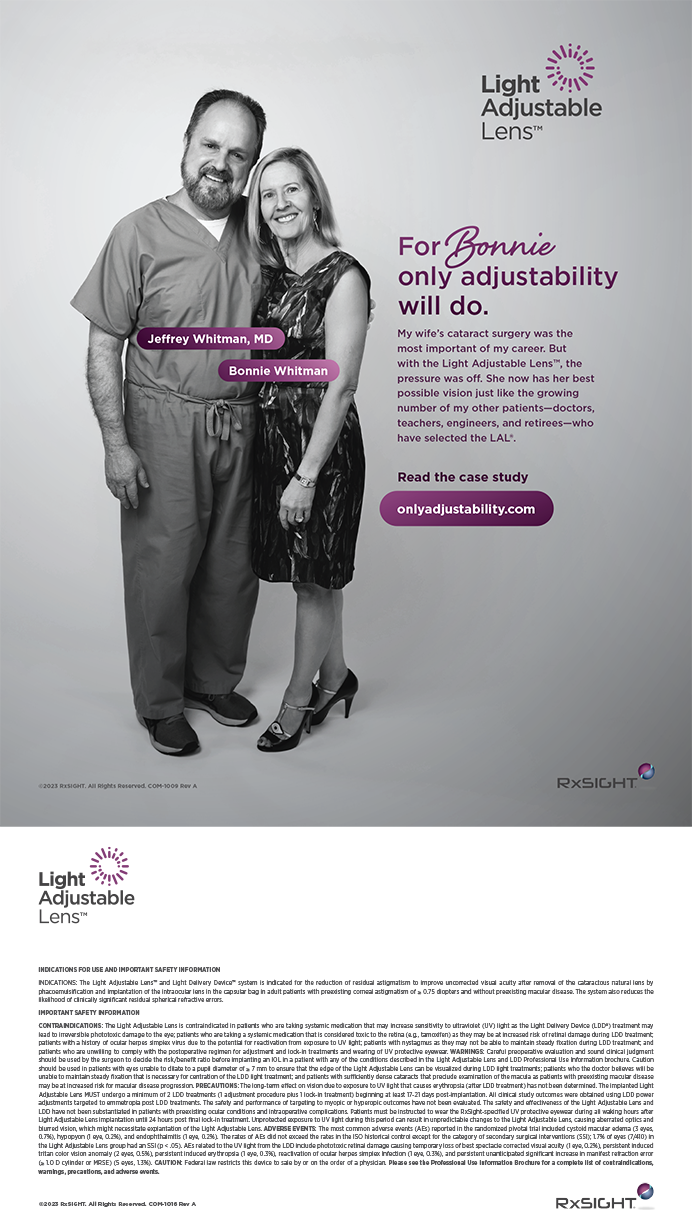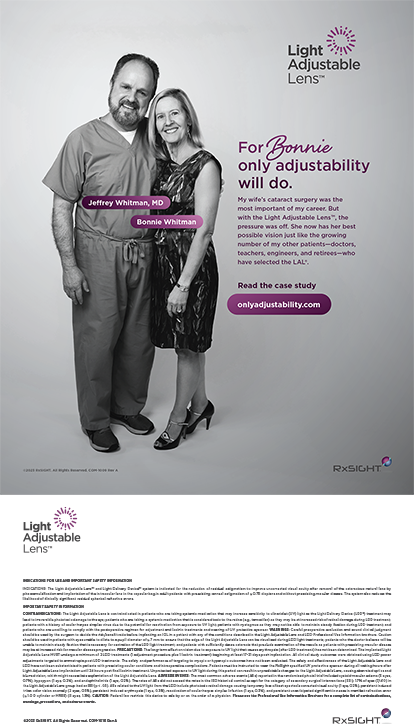We cataract surgeons all confront difficult procedures every week, but contemplate how you would have approached this case. The patient had no health insurance and clearly was not a complainer. As a result, his dense bilateral cataracts had advanced to the point that he was bumping into things. Because of delaying surgery, he had lens-induced uveitis from the hypermature cataracts. The axial length was less than 21 mm, but accurate biometry and keratometry readings were impossible, because he could not keep his eyes still. In fact, it was obvious that he would require general anesthesia for cataract surgery. The patient seemed easygoing, but the family member accompanying him was nervous and asked many questions. Finally, like some of my most demanding refractive IOL patients, he had never worn eyeglasses and was not willing to wear them after surgery.
I have described a fairly typical canine patient for Cynthia Cook, DVM, who belongs to a well-known ophthalmological veterinary practice in my region. She and I recently took turns observing each other operate, and watching her perform cataract surgery on animals was so interesting that I asked her to write two articles for this issue of Cataract & Refractive Surgery Today. Phacoemulsification with an IOL has been the canine standard for many years. The skill set for the procedure is similar, including a capsulorhexis, hydrodissection, and two-handed phacoemulsification.
Of course, our veterinary cataract colleagues have unique challenges. Dogs' lenses are very large, and their cataracts are typically hard and mature. Besides the different breeds of dogs and cats, Dr. Cook's cataract patients range in size from birds (the smallest was a finch) to horses. One of her oldest patients is a pet iguana that, according to his happy owner, could resume feeding himself following aspiration of the cataract. Her most famous cataract patient was Pierre, the 25-year-old penguin from the San Francisco Aquarium. He made the national news earlier this year when he was outfitted with a customized wetsuit, because his aging torso had become bald of its feathers (video footage available at: www.youtube.com/watch?v=YRKJQ15W_FY).
I recently passed the 25th anniversary of my first phaco procedure, which I performed as a second-year resident at the University of California, San Francisco, in May 1983. Back then, most surgeons considered phacoemulsification to be an overly risky procedure. There was definitely some truth to that assessment, given that we were not yet using viscoelastic, routinely generated radial anterior capsular (can-opener) tears, had no phaco technique other than sculpting, and used primitive machines with only 100 continuous power. We had no surgeon control of ultrasound and no ability to adjust fluidic parameters: the machine had only one aspiration flow and vacuum setting (less than 50 mm Hg). I completed virtually all of my 70 phaco cases as a resident without viscoelastic, and I implanted the posterior chamber IOLs underneath an air bubble. As with dogs today, we did not initially perform biometry to calculate the IOL power. Basically, we chose a 19.50 D IOL if the patient was emmetropic and then added or subtracted power according to his refraction.
Watching canine cataract surgery, I considered how far phaco technology and techniques for humans have evolved in the past 25 years, and I thought how the procedure performed on dogs today is probably much safer than what we were doing for many years. I came away from observing Dr. Cook with much admiration for veterinary ophthalmologists. Maybe premium IOLs are next. At least they need not worry that their patients will have unreasonable expectations.


